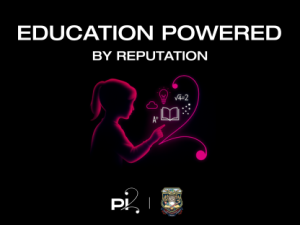
In today’s digital age, healthcare content writing plays a key role in educating patients, supporting healthcare professionals, and building trust in the healthcare system.
Whether you’re writing articles for a hospital website, press releases, social media posts or patient guides, your content needs to be clear, accurate, and accessible.
Our colleague Ruxandra Lepărău, Head of Content, shares five essential tips to improve your healthcare content writing and make sure it resonates with your audience.
Prioritize clarity and simplicity
Healthcare is a complex field, and most readers don’t have a medical background. This is why it’s important to simplify complicated medical terms and concepts without losing accuracy. Using jargon or overly technical language can confuse your audience. Instead, aim for a writing style that is clear and easy to understand.
Tips for clear writing:
- Avoid medical jargon when possible or explain it clearly.
- Use shorter sentences and simple language.
- Break down complex processes or concepts into digestible steps.
- Use analogies or everyday examples to explain difficult concepts.
Ensure accuracy and credibility
In healthcare, trust is everything. Your readers rely on your content to be accurate and up-to-date, especially when it involves medical advice, treatments, or statistics. Citing reliable sources and offering evidence-based information are critical to maintaining your credibility.
Tips for accuracy:
- Always double-check facts, statistics, and medical guidelines.
- Citete credible sources such as peer-reviewed journals, government health websites, and trusted medical organizations (e.g., WHO, CDC).
- Stay updated on recent developments in healthcare to ensure your content reflects the latest research.
Write with empathy
Healthcare content often concerns sensitive topics such as complex illness, treatments, or end-of-life care. Writing with empathy can help you connect with your audience on a deeper level. Understand that your readers may be anxious, worried, or dealing with serious health issues, so it’s important to adopt a compassionate tone that reassures and supports them.
How to write with empathy:
- Use comforting language that avoids alarming or judgmental tones.
- Acknowledge the challenges your readers may be facing.
- Offer supportive advice, highlighting actionable steps they can take.
- Avoid fear-mongering or sensationalism, which can increase anxiety.
Focus on SEO (Search Engine Optimization)
Even the most well-written healthcare content won’t reach its intended audience without proper optimization. Healthcare content must be discoverable through search engines like Google to have the desired impact. Incorporating SEO best practices into your writing helps boost visibility, leading more people to find and benefit from your content.
Key SEO Strategies:
- Use relevant keywords that align with your audience’s search intent (e.g., “symptoms of diabetes” or “how to manage chronic pain”).
- Include meta descriptions, headers, and internal links to optimize content for search engines.
- Write clear, concise titles that accurately reflect the content and include primary keywords.
- Ensure your content is mobile-friendly since many people access health information from their phones.
Include a call to action (CTA)
An effective piece of healthcare content often goes beyond providing information. Encouraging your audience to take specific actions can improve engagement and help them on their healthcare journey. A well-placed call to action (CTA) could guide readers to book an appointment, download a healthcare resource, or subscribe to your newsletter for regular updates.
CTA Best Practices:
- Use clear, actionable language (e.g., “Schedule your check-up today” or “Download our free health guide”).
- Place CTAs strategically throughout the content, without being too aggressive.
- Ensure your CTA aligns with the content’s overall purpose and provides value to the reader.
By implementing these five tips, you can create content that not only educates but also engages and empowers your audience.


